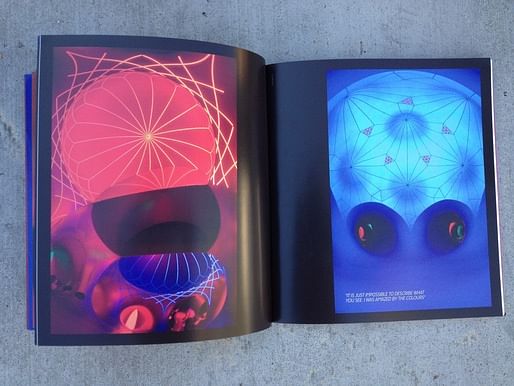
Reactions to Alan Parkinson's luminaria range from rhapsodic and enlightened, to energized or calmed. These giant inflatable structures, first designed by Parkinson in the 1980s and now touring worldwide under his "Architects of Air" organization, resemble multi-colored bouncy citadels, and create a totally immersive experience of light and color to anyone who walks their winding interiors. Imagine a Verner Panton wormhole opening into a florescent clerestory; a near-psychedelic secular pilgrimage through some giant creature's digestive system.
To celebrate over twenty years of designing, building, and touring the luminaria, Architects of Air has released The Most Beautiful, a photo book with nearly glowing images from inside the structures and a quick look at the luminaria's design history.

Since putting the first luminarium on tour in the early 1990s, Architects of Air has designed over fifteen more structures and inflated them all over the world. Made out of a custom flexible plastic, the luminaria may be designed with different colors and designs, such that when tautly inflated, outdoor light projects through the plastic and floods the interior with different hues.

Architects of Air is based in Nottingham, UK, where Alan Parkinson first started designing luminaria. Over twenty years later, the guiding design principle is still based on the structures' ability to make explicit light and color phenomenons that usually pass unnoticed. When people walk through the luminarium, a common response to the alien surroundings is both heightened awareness and magnified appreciation for the mundane -- after all, their entire experience is made possible through natural light. And in combination with its somewhat comical exterior appearance, the interior's atmosphere is that much more disarming.
Learn more about Architects of Air and take a look inside The Most Beautiful in our video flip-through below.






No Comments
Block this user
Are you sure you want to block this user and hide all related comments throughout the site?
Archinect
This is your first comment on Archinect. Your comment will be visible once approved.